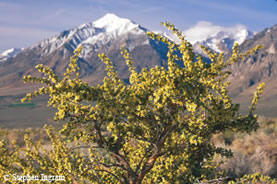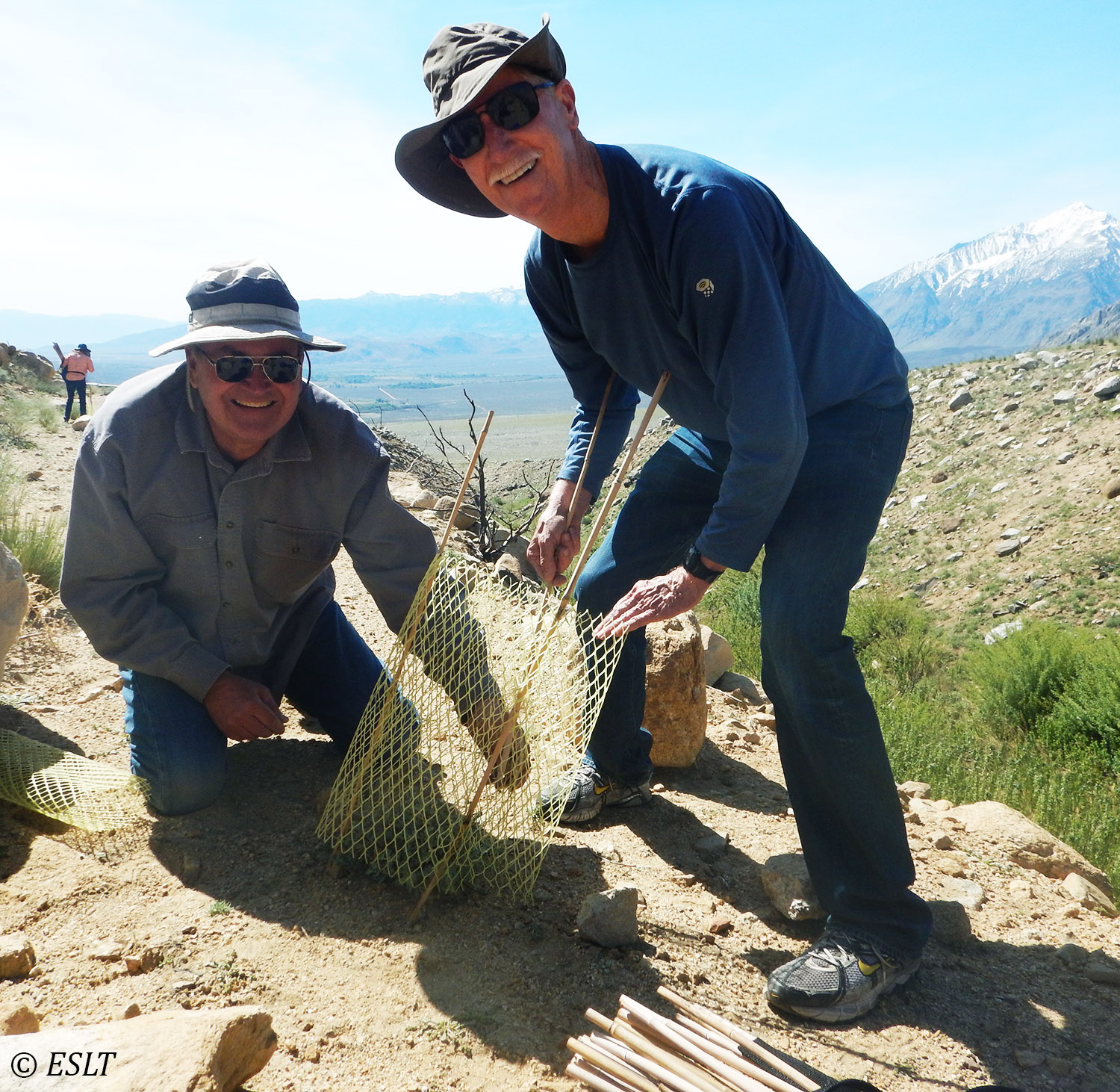Centuries before there were houses and fences, roads and cars, mule deer made the Eastern Sierra their home. The deer spend their summers in the High Sierra, where they give birth and find the food and water they need to thrive throughout the year. But making their way from the valley floor to the high meadows each spring, and then back again in the fall, is no easy task! And with human presence in their home range increasing, the trails they’ve followed for centuries have become more dangerous.
Fortunately, conservation supporters like you have successfully conserved important habitat for mule deer and other wildlife, right here in the Eastern Sierra – ensuring a safer migration for many years to come.
Obstacles Along the Migration Route
 Twice a year, the Round Valley mule deer herd – which consists of approximately 3,000 Rocky Mountain mule deer – travels between its winter range on the valley floor and the alpine meadows of the Central Sierra. Approximately 75% of the herd migrates north in the spring through the community of Swall Meadows, where their route traverses a narrow bottleneck: limited by the steep cliffs of Wheeler Ridge to the west and the deep canyon of Lower Rock Creek Gorge to the east.
Twice a year, the Round Valley mule deer herd – which consists of approximately 3,000 Rocky Mountain mule deer – travels between its winter range on the valley floor and the alpine meadows of the Central Sierra. Approximately 75% of the herd migrates north in the spring through the community of Swall Meadows, where their route traverses a narrow bottleneck: limited by the steep cliffs of Wheeler Ridge to the west and the deep canyon of Lower Rock Creek Gorge to the east.
In addition to the constant danger posed by vehicles, development has hampered portions of the deer’s limited habitat – making finding food and shelter along the route more difficult.
Conserving the Corridor
 Concerned by the effect that increased residential development would have on the deer’s annual migration, a group of concerned residents teamed up in 2001 and formed what was to become Eastern Sierra Land Trust. Since then, ESLT has worked with numerous landowners in the Swall Meadows area to permanently protect a total of 269 acres of private land in the migration corridor, making the deer’s passage safer and forage along the way more assured.
Concerned by the effect that increased residential development would have on the deer’s annual migration, a group of concerned residents teamed up in 2001 and formed what was to become Eastern Sierra Land Trust. Since then, ESLT has worked with numerous landowners in the Swall Meadows area to permanently protect a total of 269 acres of private land in the migration corridor, making the deer’s passage safer and forage along the way more assured.
To balance the needs of people and wildlife, ESLT partners with landowners to develop voluntary land protection agreements, known as conservation easements. In this way, local families are providing permanent protection for important wildlife habitat by restricting future subdivision and development, while keeping their land private and under their control.
Together with additional lands protected by the California Department of Fish and Wildlife, this successful conservation effort connects public and private lands in the middle elevations – including ESLT’s own Swall Wildlife Preserve – to the High Sierra meadows that the deer seek out each year.
Read more about our completed conservation projects in Swall Meadows.
Maintaining a Healthy Home
 Safe habitat and good places to forage in the mule deer herd’s winter range and along their migration route allow deer to survive through the leaner months. The Round Valley deer herd has a relatively small winter range of only about 30 square miles. So maintaining healthy habitat here is critical.
Safe habitat and good places to forage in the mule deer herd’s winter range and along their migration route allow deer to survive through the leaner months. The Round Valley deer herd has a relatively small winter range of only about 30 square miles. So maintaining healthy habitat here is critical.
Sagebrush (Artemisia tridentata ssp. tridentata) and antelope bitterbrush (Purshia tridentata ssp. tridentata, at right) are the mule deer’s primary sources of food. Bitterbrush is especially important to deer in the fall when they return from the high elevations. The leaves and shoots provide significant sources of calcium, phosphorus, fat, and crude protein at a critical time of year.
Round Fire Recovery Efforts

Randy Keller (left) and Bill Waldron (right) are two of the many volunteers who have joined us to help protect young bitterbrush seedlings.
In February 2015, the Round Fire ignited in Round Valley and quickly burned through the communities of Paradise and Swall Meadows. Dozens of families lost their homes – and hundreds of mule deer did, too.
Since the fire, Eastern Sierra Land Trust has teamed up with volunteers, residents, agencies, and other local organizations to help restore the corridor. Together with our conservation partners and hardworking volunteers, we’ve planted thousands of new, locally-grown bitterbrush starts, protected naturally-occurring bitterbrush seedlings, and taken action to prevent invasive weeds from gaining a foothold.
There’s still plenty of restoration work needed to bring the landscape back to full health, and ESLT periodically hosts volunteer workdays in the area. By joining our volunteer team, you can help make sure that this important home for wildlife continues to regrow and thrive. Please click here if you’re interested in signing up to volunteer.
Thank You to Our Supporters and Partners:
California Department of Fish & Wildlife
Bishop Office: 760-872-1171
California Deer Association
1-888-499-DEER
Wildlife Conservation Board
916-445-8448
Private Landowners in the Migration Corridor


